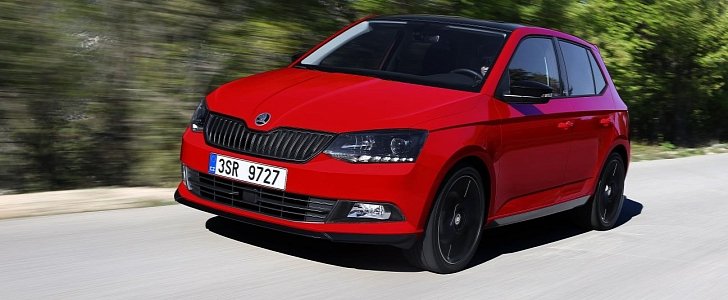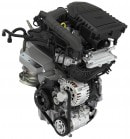After starting production of the 1-liter turbo engine, Skoda has announced that the Fabia supermini will replace the 1.2 TSI versions with a couple of 1.0 TSI. This will reduce fuel consumption by 6% without negatively impacting performance.
Since the Fiesta 1.0 EcoBoost came out about four years ago, 3-cylinder engines have become the norm in the supermini segment. However, we'll be sad to see the 1.2-liter four-cylinder go because it's served the VW Group for a decade.
The fuel consumption and emissions of the Hatchback and Estate, on the other hand, have improved. Because the engine is identical to that in the Polo BlueMotion, we're not surprised that CO2 emissions are just 99 grams per kilometer.
Both 1.0 TSI engines benefit from the latest engine technology. With its compact construction and due to its lightweight aluminum crankcase, the engine weighs ten kilograms less than the 1.2 TSI engine. Volkswagen says that its aluminum pistons are so well balanced that they didn't need a balancing shaft, saving weight.
The small turbochargers spool up quickly due to the intercooler being integrated into the induction tract and generates 1.6 bar of pressure. Also new for 2017 is an updated safety suite. You can now order Front Assist which reduces the risk of a frontal crash which comes with the integrated City Emergency Brake function. Adaptive Cruise Control (ACC) is also available for the new three-cylinder versions. This consistently maintains a gap from the vehicle in front at speeds of up to 160 km/h. You can also have keyless start and access.
Base 1.0 TSI with 95 PS
The Fabia will probably continue to be available with cheaper naturally aspirated engines, but we recommend getting this new 1.0 TSI instead. At 95 PS and 160 Nm of torque, it's got just 5 PS more than its predecessor. However, the block is lighter, which might be the reason they claim the 0 to 100 km/h time has improved by 0.3 seconds to 10.6 seconds.The fuel consumption and emissions of the Hatchback and Estate, on the other hand, have improved. Because the engine is identical to that in the Polo BlueMotion, we're not surprised that CO2 emissions are just 99 grams per kilometer.
1.0 TSI with 110 PS and more torque
The second engine in the range has the same 110 PS power output as the 1.2 TSI it replaces. However, the torque has gone up considerably, from 175 to 200 Nm. Acceleration from 0 to 100 km/h now takes 9.5 seconds, 0.1s slower than before. With the standard 6-speed manual, this car emits 101 grams of CO2, while the DSG7 model bumps it up by 3 grams.Both 1.0 TSI engines benefit from the latest engine technology. With its compact construction and due to its lightweight aluminum crankcase, the engine weighs ten kilograms less than the 1.2 TSI engine. Volkswagen says that its aluminum pistons are so well balanced that they didn't need a balancing shaft, saving weight.
The small turbochargers spool up quickly due to the intercooler being integrated into the induction tract and generates 1.6 bar of pressure. Also new for 2017 is an updated safety suite. You can now order Front Assist which reduces the risk of a frontal crash which comes with the integrated City Emergency Brake function. Adaptive Cruise Control (ACC) is also available for the new three-cylinder versions. This consistently maintains a gap from the vehicle in front at speeds of up to 160 km/h. You can also have keyless start and access.



